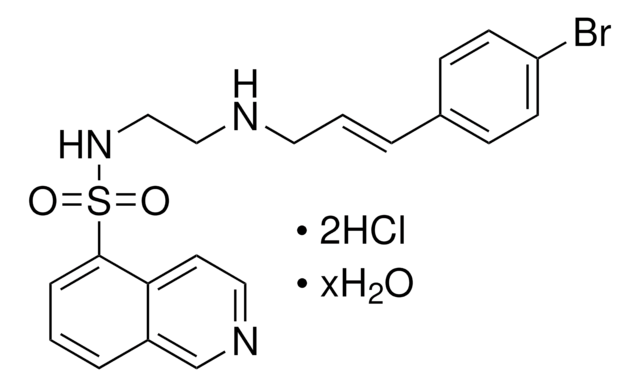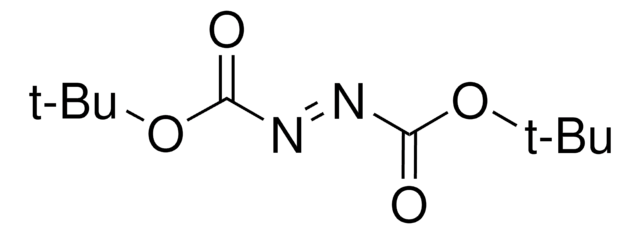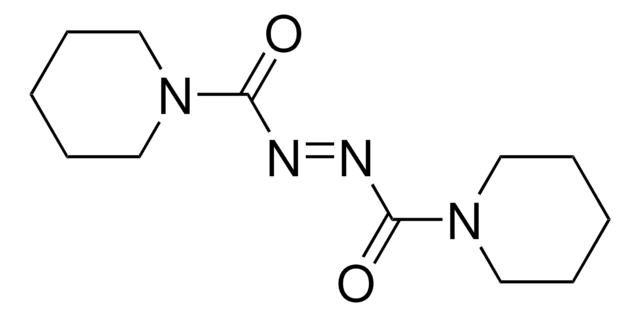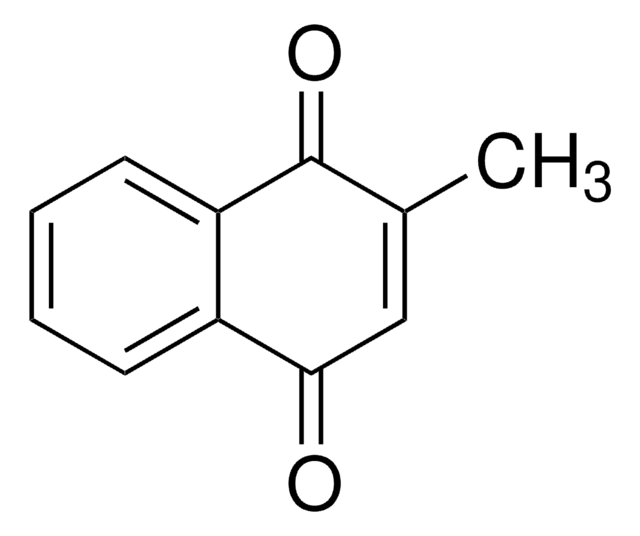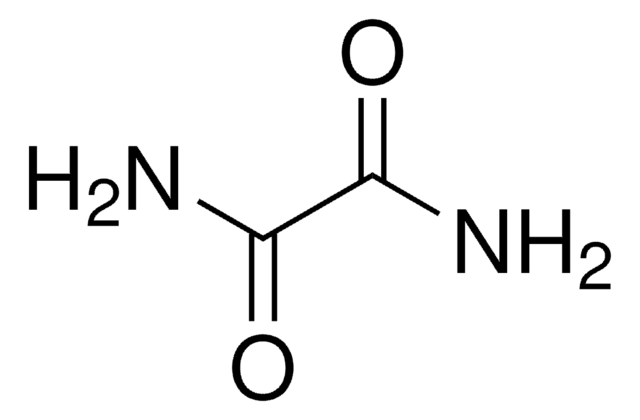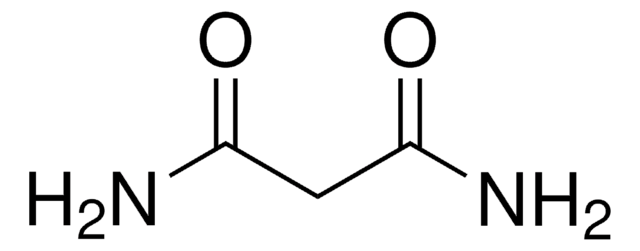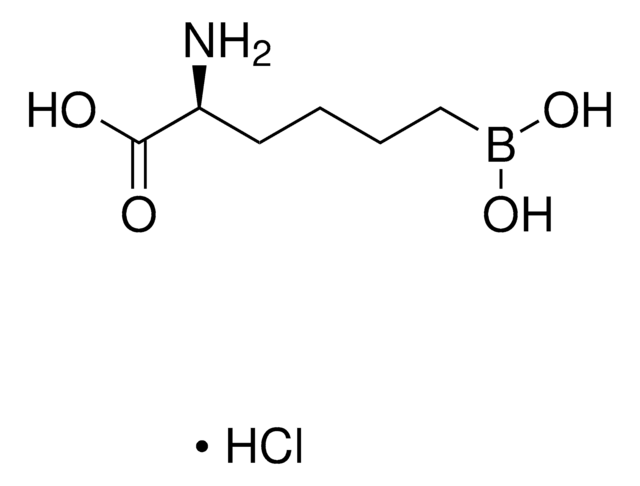D3648
Diamide
Synonym(s):
1,1′-Azobis(N,N-dimethylformamide), N,N,N′,N′-Tetramethylazodicarboxamide, Azodicarboxylic acid bis(dimethylamide), Diazenedicarboxylic acid bis(N,N-dimethylamide), TMAD
About This Item
Recommended Products
assay
≥98% (TLC)
Quality Level
form
powder
mp
113-115 °C
solubility
water: 19.60-21.00 mg/mL, clear to slightly hazy, orange
storage temp.
−20°C
SMILES string
CN(C)C(=O)\N=N\C(=O)N(C)C
InChI
1S/C6H12N4O2/c1-9(2)5(11)7-8-6(12)10(3)4/h1-4H3/b8-7+
InChI key
VLSDXINSOMDCBK-BQYQJAHWSA-N
Looking for similar products? Visit Product Comparison Guide
Application
Storage Class
11 - Combustible Solids
wgk_germany
WGK 3
flash_point_f
Not applicable
flash_point_c
Not applicable
ppe
Eyeshields, Gloves, type N95 (US)
Certificates of Analysis (COA)
Search for Certificates of Analysis (COA) by entering the products Lot/Batch Number. Lot and Batch Numbers can be found on a product’s label following the words ‘Lot’ or ‘Batch’.
Already Own This Product?
Find documentation for the products that you have recently purchased in the Document Library.
Customers Also Viewed
Our team of scientists has experience in all areas of research including Life Science, Material Science, Chemical Synthesis, Chromatography, Analytical and many others.
Contact Technical Service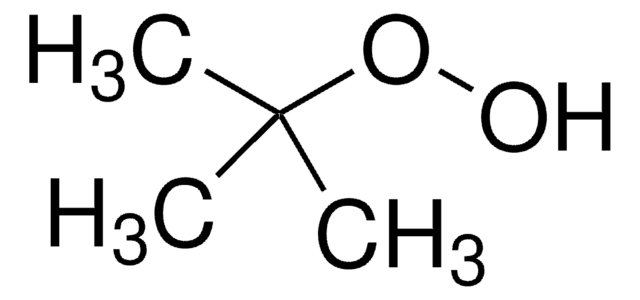
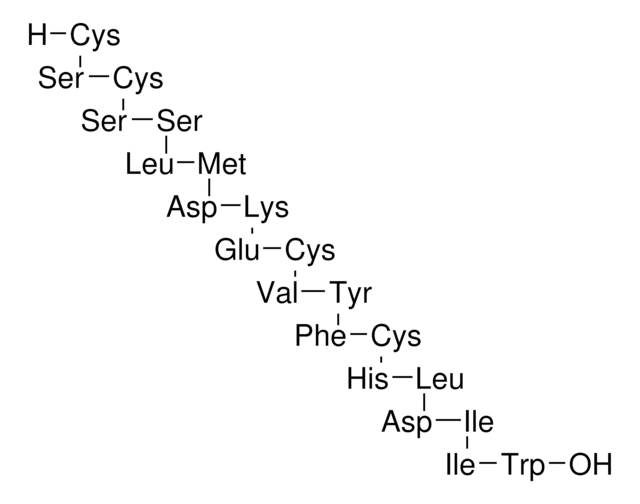


![[Ala1,3,11,15]-Endothelin 1](/deepweb/assets/sigmaaldrich/product/structures/257/425/5e642291-a643-4523-a7f1-65d3e6e51aa8/640/5e642291-a643-4523-a7f1-65d3e6e51aa8.png)
